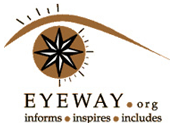The concept of inclusion is considered important in all fields nowadays. Inclusive education for differently-abled children is one such attempt to include children with various kinds of disabilities in normal schools. The idea is that through inclusive education, differently-abled children will get an opportunity to mingle with normal children from an early age. It will help increase their confidence level, improving their competency, and they will be able to boldly express their talent before others. This will ultimately lead to bringing the differently-abled into the mainstream at at early age. That said, there are many challenges in the effective implementation of this programme. I was a blind learner in a normal school in Kerala. I was fully unaware of my community in my childhood. As a blind person, I was not able to learn Braille. In many situations, I ended up having to identify my issues and discuss them with my parents and teachers. In my case I was lucky enough to have cooperative and helpful teachers when I was in elementary school. And I was also lucky enough to have a little vision during that time. But not everyone is that fortunate. Here, the issue is that children may not be able to rightly communicate their problems. And in many cases they will be hesitant to express their problems. A differently-abled child in a normal school requires special attention on many fronts. Of course, many such issues can be avoided by putting a differently-abled child in a special school. For example, a blind child can learn Braille only in a special school. But that’s not possible for all such children. So there is a need to find ways to provide for the special needs of differently-abled children in a normal school itself, otherwise inclusive education cannot be effective. The teachers also need to be sensitised as well as trained to handle mixed classes, which include the differently-abled. For instance, even though I used to sit in the front row, especially in mathematics classes, I usually ended up with lots of confusion and doubt. When I reached the 8th standard, I started recording my classes and learned by listening to them repeatedly. But teachers do not always say all the things they write on the blackboard. And when I approached them with my doubts, they were also confused about how they could help me. There is a need for well-trained teachers, who can handle accessible technology for differently-abled children and help them in tackling their specific problems. Special coaching classes for differently-abled children in accessible techniques should be given. Special counselling should be given to parents of such children and to teachers as well. It is important to think about providing all the facilities needed for a differently-abled child in a normal school before sending them to normal schools, rather than special schools. In my opinion — shared by many differently-abled people — it is better to teach a differently-abled child in a special school until 7th standard or so, and then put them in an integrated system. If we could provide special attention and facilities in a normal school itself, we can also make them learn along with other children. It is necessary to improve the infrastructure and quality of learning and teaching in special schools because these changes can be incorporated in regular schools gradually.

Facebook comments